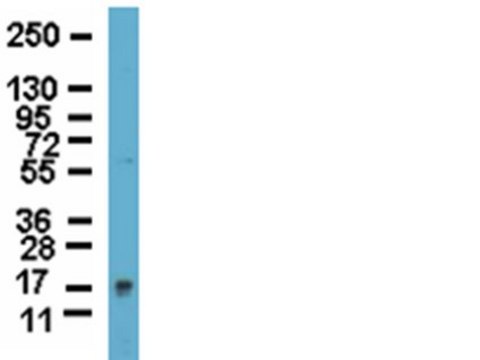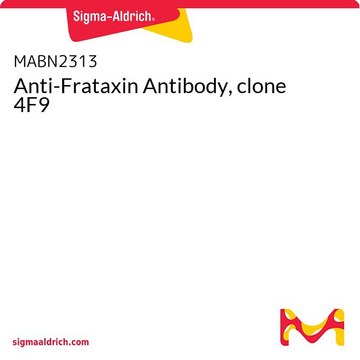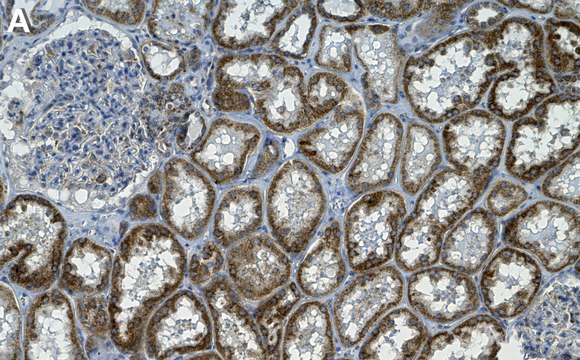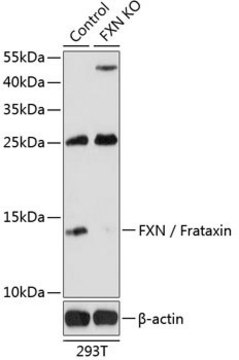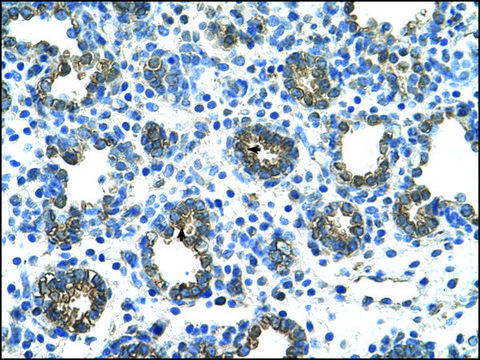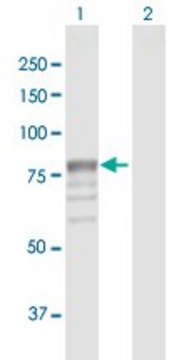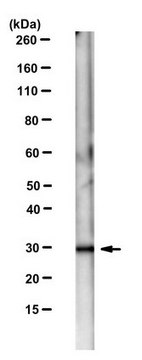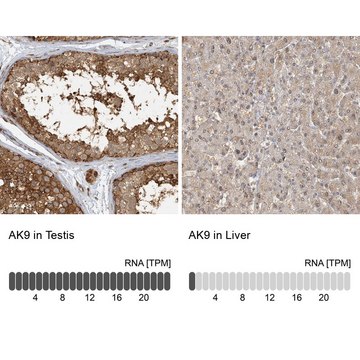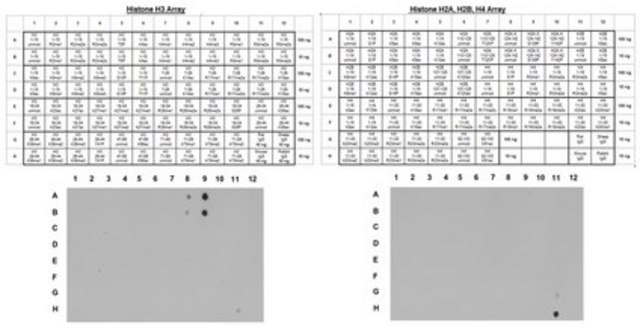MAB1594
Anti-Frataxin Antibody, exon 4, clone 1G2
ascites fluid, clone 1G2, Chemicon®
Synonym(s):
Friedreich ataxia, Friedreich ataxia protein
About This Item
Recommended Products
biological source
mouse
Quality Level
antibody form
ascites fluid
antibody product type
primary antibodies
clone
1G2, monoclonal
species reactivity
human, rat, mouse
manufacturer/tradename
Chemicon®
technique(s)
ELISA: suitable
immunocytochemistry: suitable
immunofluorescence: suitable
western blot: suitable
isotype
IgG1κ
NCBI accession no.
UniProt accession no.
shipped in
dry ice
target post-translational modification
unmodified
Gene Information
human ... FXN(2395)
mouse ... Fxn(14297)
rat ... Fxn(499335)
General description
Specificity
Immunogen
Application
1:100-1:1,000. Fixation of cells in ice cold acetone or 4% paraformaldehyde is recommended. Due to the subcellular localization of frataxin in the mitochondria, cells should be permeabilized in the presence of detergent prior to incubation with primary antibody.
ELISA:
A previous lot of this antibody was used on ELISA.
Western blot (natural and recombinant protein):
1:5,000; mitochondrial preparations are recommended for consist signals (see Santos, 2001).
Optimal working dilutions must be determined by the end user.
Quality
Western Blot Analysis:
1:1000 dilution of this lot detected Frataxin on 10 μg of PC12 lysates.
Target description
Physical form
Storage and Stability
Handling Recommendations: Upon first thaw, and prior to removing the cap, centrifuge the vial and gently mix the solution. Aliquot into microcentrifuge tubes and store at -20°C. Avoid repeated freeze/thaw cycles, which may damage IgG and affect product performance
Analysis Note
Liver, heart or skeletal muscle.
Other Notes
Legal Information
Not finding the right product?
Try our Product Selector Tool.
Storage Class Code
11 - Combustible Solids
WGK
WGK 1
Flash Point(F)
Not applicable
Flash Point(C)
Not applicable
Certificates of Analysis (COA)
Search for Certificates of Analysis (COA) by entering the products Lot/Batch Number. Lot and Batch Numbers can be found on a product’s label following the words ‘Lot’ or ‘Batch’.
Already Own This Product?
Find documentation for the products that you have recently purchased in the Document Library.
Our team of scientists has experience in all areas of research including Life Science, Material Science, Chemical Synthesis, Chromatography, Analytical and many others.
Contact Technical Service